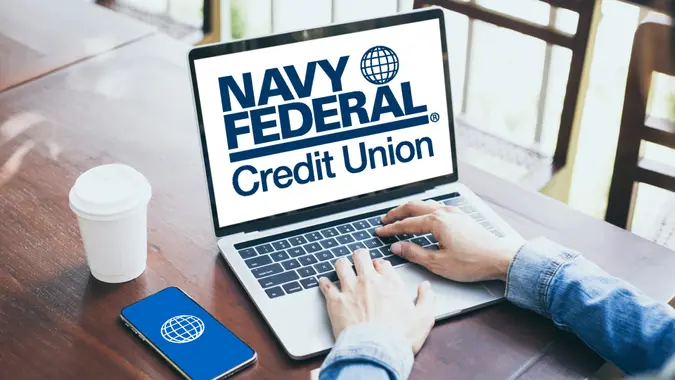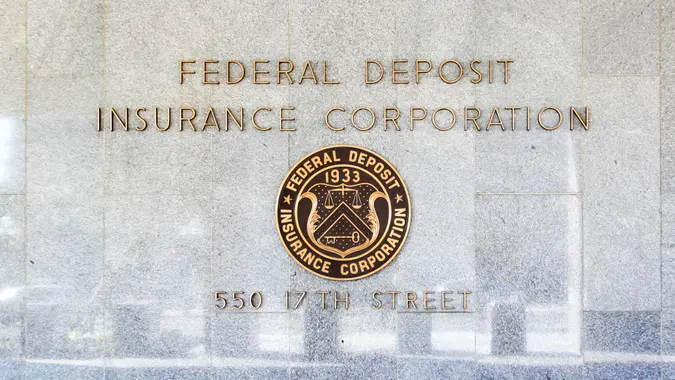Are Credit Unions Really More Accessible?

Commitment to Our Readers
GOBankingRates' editorial team is committed to bringing you unbiased reviews and information. We use data-driven methodologies to evaluate financial products and services - our reviews and ratings are not influenced by advertisers. You can read more about our editorial guidelines and our products and services review methodology.

20 Years
Helping You Live Richer

Reviewed
by Experts

Trusted by
Millions of Readers
Deciding where to bank can be a daunting decision because once you set up accounts, it’s a hassle to close them and go somewhere else. Do you go with a big, well-known bank with ATMs on every corner, or choose a smaller credit union, known for its customer-friendly approach and other benefits?
Here, experts weigh in on why credit unions might be more accessible for the average consumer.
What Is a Credit Union?
It’s helpful to start with a basic understanding of how a credit union differs from a bank. According to Gary Ruesch, digital branch manager at Affinity Federal Credit Union, “Credit unions, unlike banks, are based on a cooperative or ‘co-op’ model in which the customers…are also the owners.”
Traditional banks are for-profit companies that distribute profits among shareholders, while credit unions are not-for-profit institutions “owned” by their members. “Therefore, you can think of credit union membership as buying a stake in an organization, rather than paying somebody else in exchange for services. Since members are our shareholders we answer to them first and foremost,” Ruesch said.
With credit unions, a much smaller group of people are determining who to lend money to, said Richard Latimer, CEO of Veritas Buyers. “Every saver at a credit union has a say, even some voting rights.”
Benefits to Members
Because credit unions don’t have to drive big profits and are owned by smaller groups of people, members receive benefits they won’t get at bigger banks. “Credit union profits are typically returned back to members through better rates on loans, lower fees and higher yields on savings and checking accounts,” said Jennifer Kimmell, SVP and chief marketing officer at TruWest Credit Union in Phoenix, Arizona. Additionally, some don’t require a minimum opening balance and may have less stringent qualifying requirements.
“Instead of pushing products that may not be in the best interest of their members, they are more likely to focus on educating their members and guiding them to choose the products best for them,” added Valerie Moses of Addition Financial, a credit union based in Florida. “They often provide educational resources to empower their members, and even offer specialized youth accounts to help their youngest members form positive financial habits from an early age.”
This also means that credit unions may be more accessible to those with a lower income, said Carter Seuthe, CEO of Credit Summit. “They are more willing to go the extra step to help out your situation and get you the plans you need.”
Personable Service
Another major difference between credit unions and banks, Kimmell said, is “the culture and approach to service.” Credit unions can take “a people-first approach, a pledge to give great service and create a culture of caring for members, employees, and the community.”
Because of this, credit unions often inspire a loyalty big banks can’t compete with. “You’ll often hear members say that service is their biggest sticking point, because they don’t feel like they’re just another customer like they do at big banks,” Ruesch said.
All the Same Services
You lose nothing by banking with a credit union, according to Ruesch, who points out you still have access to ATMs and adds, “Many credit unions participate in the shared branching network. This allows members the ability to perform basic deposit and withdrawal transactions, in person, at other participating credit unions in the U.S.” Most also have mobile banking and online banking available 24/7, with services such as mobile deposit. Others even offer a 24/7 live member service representative assistant, Ruesch said.
Financial Literacy
In addition to financial services, many credit unions also engage in financial literacy with their members. “This includes articles, resources and in-person seminars on important financial topics such as buying your first home, managing your budget, identity theft, managing your credit, etc,” Ruesch said.
The Only Drawback
The only way in which credit unions may not be as accessible as big banks is that, “Memberships are generally restricted to a particular group of people — employees of a particular institution, residents of a certain area, or even members of certain organizations,” said Lana Khabarova, founder of SustainFi, a sustainable investing and personal finance platform. However, she said it may be “worth jumping through a few hoops,” since members get a say in how the union is run, and “you get to support the local community or even the causes you believe in.”
More From GOBankingRates
 Written by
Written by  Edited by
Edited by 

























